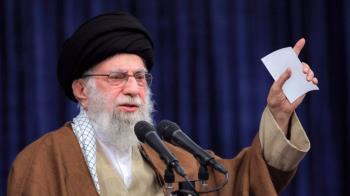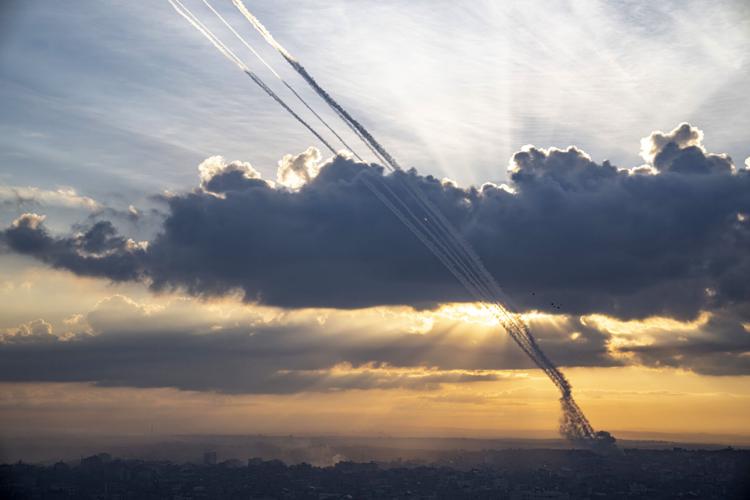Alwaght- Since Saturday, the successful offensive launched by Hamas deep into the occupied territories in addition to bringing happiness to the Palestinians and shocking the Israelis has captivated the world attention and keeps making headlines.
Examination of the motivations and ramifications of Operation Al-Aqsa Storm requires the broader grounds of the Israeli-Palestinian conflict in which the people of Palestine, especially in Gaza, have suffered from social, economic, and political plights over decades under the Israeli occupation.
Although the Palestinians have been repressed by the Israeli occupiers over the past 75 years and have always fought against the usurpers to liberate their occupied lands, the recent operation by Hamas, which was unprecedented in all respects, is the result of provocative actions the hardline cabinet of Benjamin Netanyahu has taken against the Palestinians.
Heightening the violence and violations against Palestinians and Al-Aqsa Mosque
Over the past year, with the entry to the Israeli cabinet of such hardline figures like Itmar Ben-Gvir as national security minister and Bezalel Smotrich as finance minister the occupation equations have brought about new circumstances in which anti-Palestinian policies were put high on agenda to eliminate Palestine and conclude Al-Quds Judaization project. Meanwhile, to realize this dream, they need to cleanse the West Bank of Palestinians and to his end, they ramped up violence against the Palestinians.
From arming the settlers to founding National Guard all have been measures for further killing and displacing the Palestinians of the West Bank and legitimizing the terrorist actions of the settlers. According to figures, since the beginning of the year, hundreds of Palestinians were killed, with dozens of them children and women, something pushing the statistics up compared to the past years. According to official statistics, since 2008 that Netanyahu has been holding the power, 150,000 Palestinians have been killed by the occupation forces, nearly a third of whom are women and children. Despite international demands to defuse the tensions, the hardline government in Tel Aviv has raised the level of tensions with the resistance groups in the West Bank and Gaza in the past months, and continuous attacks were carried out on the towns of Hawara, Nablus, and Jenin.
The approval of the settlement development plan in the West Bank, which Netanyahu had announced as one of the promises of his government, infuriated the Palestinians and even the international community. The leaders of the Palestinian resistance warned the Israelis many times that the construction of settlements with the aim of forced displacement of the Palestinians will not have a happy ending for the occupiers, but the radicals turned a deaf ear.
The desecration of the Holy Al-Aqsa Mosque by the extremist settlers led by Ben-Gvir has intensified in the past months. Despite the Palestinian leaders’ warnings that the desecration of this holy place is their red line and despite the global opposition to these provocative actions, the Israelis continued their adventures in this holy place. In recent days, too, they desecrated Al-Aqsa Mosque for a week amid celebration of Yun Kippur. This warmongering was not unseen by the Palestinian groups.
Arrangement of the provocative march of flag was another matter arousing the ire of the Palestinians. In this contentious move, too, Ben-Gvir was a leader. He joined the marchers and brazenly threatened the Palestinians with onslaughter and expulsion from the West Bank.
In order to implement its ambitious plans, Netanyahu’s hardline government seeks to to tighten the noose on the Palestinians economically, and for this purpose, it tightened the blockade on the crossings around Gaza, where humanitarian aid was delivered to this besieged enclave from time to time. Also, by sanctioning the Palestinian Authority and cutting off funds to it, Tel Aviv tried to take revenge for its defeats from the resistance groups in the West Bank, causing difficult economic conditions for the Palestinians.
Another example of the Israeli warmongering was the increased pressure put on the Palestinian prisoners through strict rules designed by Ben-Gvir, depriving the prisoners of basic needs like blankets and hot bath water. Restricting visits to the prisoners and not holding trials for them were other measures of the hardliners against the Palestinians. Hamas and Islamic Jihad leaders have always warned against miserable conditions of the prisoners, saying they are their red line.
Among the important reasons that motivated Hamas operation in the occupied territories was the preparation by the Israeli military for a large-scale attack on the West Bank and Gaza. Hamas leaders said their attack was preemptive. In the past weeks, the Israeli media had also raised possibility of a large-scale attack on the West Bank and Gaza, but the time was unclear.
Preplanned operation
The surprise attacks by Hamas on the occupied territories have evoked the question in the minds of analysts whether this operation was an impulsive action or the resistance had planned it in the past weeks. In response to this question, it can be said that since the formation of the hardline government of Netanyahu, Hamas had adopted a policy of patience along with warnings towards its Israeli enemy and avoided unplanned actions, and this patience showed that the leaders of this movement certainly were designing plans to deal the working blow at the proper time and place.
The enormity of casualties and the surprise of the Israeli regime also indicated that the operation was pre-planned and the enemy’s strength and weakness had been evaluated to a great extent, otherwise, all these human losses and the capture of spoils and prisoners would not have happened overnight. This is something Saleh al-Arouri, the deputy chief of Hamas political office, confirmed in a conversation with Al-Jazeera.
“This operation was carried out according to the plan, including the control of settlements and military bases, and now the battle is at the beginning.” Al-Arouri said, adding that ground Israeli offensive against Gaza is the best scenario for the resistance. The Al-Qassam Brigades have captured senior Israeli officers and we are prepared for the worst possibilities, including a ground offensive. This comes as Netanyahu has amassed tens of thousands of troops for a ground offensive against Gaza, claiming that he wants to cleanse the enclave of Hamas. But Hamas remarks indicate that the movement has plans to take on the Israelis on the ground and is not afraid of a confrontation.
Collapse of the Israeli military’s power
Despite the fact that in the past two decades Hamas inflicted heavy losses on the Israeli regime by strengthening its defense power, its achievements in the two days of the current battle have been more than those of the previous conflicts. In a short period of time, the resistance fighters managed to kill hundreds of Israeli soldiers and capture a large number of them. This operation showed that the Israeli regime contrary to the claims of its officials is highly vulnerable, and if the Palestinians continue the conflict with a plan, they can achieve a great victory.
In other words, this operation shattered the empty military image of the Israeli regime. The inefficiency of the much-vaunted multi-billion Iron Dome air defense in effectively engaging Hamas rockets and them reaching the heart of Tel Aviv all bear witness to the fact that the Israeli military has lost the balance against the resistance groups and the settlers can no longer rely on it for protection. Besides, in recent months, several Israeli officials admitted to the weakness of the Israeli Defense Forces (IDF).
Another point about this battle was the use of the surprise element that put Tel Aviv in a great shock. This operation was so enormous that within 20 minutes, 5,000 rockets were fired into the occupied territories, showing that the resistance forces are at the highest possible level of readiness. Over 350 deaths, over 1,000 people injured, 750 people missing, and 100 others captured in 24 hours were Hamas’s achievement in this operation. The Israeli officials have put the casualties even at a larger number. Earlier, resistance groups were defending against the Israeli attacks inside Gaza, but now they have shifted from defensive to offensive mode. Destruction of the fences and walls around Gaza and ground and air incursion into the depth of the occupied territories and capture of several settlements was conducted for the first time in the history of the anti-occupation struggle.
Prisoners, Hamas’s winning card
Capturing prisoners from the Israeli regime is Hamas’s winning card in the ceasefire time. Tens of Israeli military personnel and a number of settlers are held by the resistance forces. With this number of captives, the Palestinians can conclude the prisoner swap case that has reached an impasse in recent years due to the Israeli treachery. In October 2011, Hamas signed “loyalty to prisoners” deal with Tel Aviv and according to it, 1027 Palestinians were freed in return for release of an Israeli soldier. So, it can be said that in return of the Israeli prisoners, thousands of Palestinians (4,900 according to the figures) can be freed.
The capture of Israeli soldiers has spread terror in the occupied territories and especially among the security forces, and this issue makes the army soldiers hesitant to confront Hamas forces. On the other hand, this large number of human casualties and captivity of Israeli commanders will weaken the Israeli morale and undoubtedly have an impact on the ground.
Another important point is that Hamas operation was a combined and all-out one. Along with the rocket firing and ground offensive, Hamas fighters struck from the sea, and according to the Israeli officials, from the tunnels in show of the movement’s combat capabilities. Netanyahu has always claimed that he destroyed many of the infrastructures of Hamas and Islamic Jihad in Gaza, but recent operation showed that the arsenals of these groups are beyond the imagination of the occupiers and they can resist the armed-to-the-teeth Israeli military and even win the battle.
What is going on in the occupied territories has brought about new equations and standards in the Palestinian dispute and will put the permanent solution case on the table of any future negotiations. That is because the current war aside from highlighting the complicated nature of conflict and challenging the hegemony of the Israeli enemy sent a message to the international community, especially the West, telling them that they should not close their eyes to the Palestinian interests and should conclude the two-state solution even if it is for the sake of saving the collapsing Israeli regime.



























